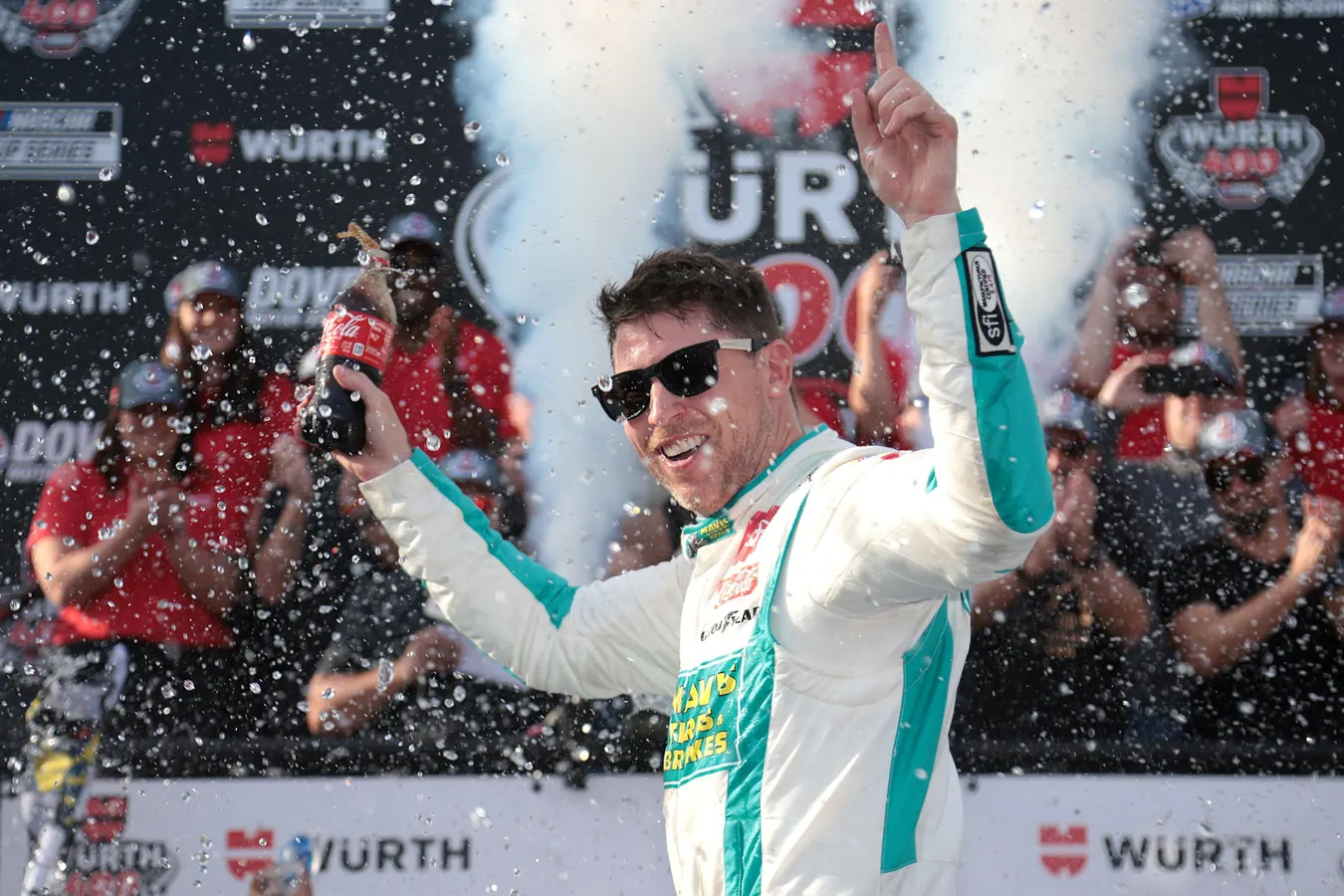Copyright forbes

DOVER, DELAWARE - APRIL 28: Denny Hamlin, driver of the #11 Mavis Tire Toyota, celebrates in victory lane after winning the NASCAR Cup Series Würth 400 at Dover International Speedway on April 28, 2024 in Dover, Delaware. (Photo by James Gilbert/Getty Images) Getty Images The NASCAR Charter Agreement released Wednesday isn’t bedtime reading. It’s 108 pages of dense legalese, the kind of document that could make a lawyer’s eyelids heavy in less than five minutes and the kind of thing you’d read only if the power went out and your phone died. But buried deep inside that filing — part of the ongoing 23XI Racing vs. NASCAR lawsuit — are a few pages that can stop even the most jaded team owner mid-coffee. Tables. Real, hard numbers. The kind that finally answer the question nobody in the garage has ever answered straight: how much do these teams actually make? At least for a race. And for the first time, we can finally get a peek. The Numbers NASCAR Never Wanted Public Among the exhibits are charts labeled “Race Purse Payout Curve for Cup Series Points Events” and “Year-End Point Fund Payout.” They read like NASCAR’s Rosetta Stone — the formula behind the fortunes. The tables show, in crisp black and white, exactly what each finishing position earns and how that scales over the next several years. There’s nothing speculative about it. No whispers, no “industry sources.” Just line after line of percentages, projections, and payouts that map out the financial DNA of the NASCAR Cup Series. MORE FOR YOU It’s the kind of transparency that’s been missing since the charter system began — and it changes how we understand where the money goes. How Phoenix Fits the Formula This weekend’s NASCAR Cup Series Championship at Phoenix Raceway carries a total purse of $12,394,135. Using NASCAR’s own payout curve, here’s how that breaks down: Phoenix Payout So the winner of the championship race walks away with roughly $640,000, while the car limping home in 40th still nets over $100,000 — enough to keep the hauler fueled and the lights on. That narrow spread might surprise fans who picture NASCAR as a big-money sport where winners make millions and backmarkers scrape by. The truth, as the documents reveal, is far flatter. NASCAR’s system is designed to reward consistency and participation, not a single checkered flag. The Long Game — The Year-End Fund Another section of the filing details the Year-End Point Fund — a pot of money distributed based on final standings. It grows from $33.7 million in 2025 to over $40 million by 2031. Year-End Point Fund summary There’s even a built-in annual increase of roughly 3%, a quiet escalator clause that moves the numbers north each year — like a cost-of-living adjustment for millionaires with pit crews. It’s steady, it’s structured, and it’s very corporate NASCAR: safe, and predictable. Why It Matters These figures, leaked through litigation, provide the first real look at NASCAR’s financial architecture. They confirm that even as event purses climb into eight figures, the performance gap between front-runners and field-fillers remains relatively narrow. It’s a system designed to keep everyone solvent, but few truly rich. It also sheds light on why team owners have been at odds with NASCAR over the next charter agreement. Rising costs, expensive technology, and expanding travel schedules have all outpaced that modest 3% growth curve. In other words: the pie isn’t growing fast enough, and now we know exactly how thin each slice really is. The Bigger Picture For years, NASCAR’s payout model has been treated like national security. Now, for the first time, we can see it. What these charts reveal is a sport balancing on the fine line between competition and capitalism — one where a race team’s success can be measured in tenths of a second and tenths of a percent. Because behind every victory lane celebration, there’s a spreadsheet. And thanks to one very public lawsuit, we’ve finally seen a bit of what’s on it. But don’t start imagining NASCAR teams swimming in gold coins like cartoon pirates just yet. We still have no idea how much comes from sponsorships, contingency funds, or what actually lands in a driver’s wallet. And let’s not even start on what it costs to keep a car, a hauler, and a team running all season — spoiler: it’s not cheap. These numbers give us a peek behind the curtain, sure, but the full magic trick? Still very much a mystery. Editorial StandardsReprints & Permissions



